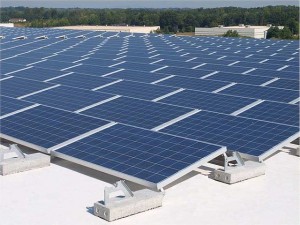The images are all too familiar. Giant brick chimneys spewing smoke into the air. Large tankers with black oil leaking into blue water. City skylines obscured by layers of thick smog. Technology is continuously changing every single aspect of the human existence, and as a consequence, it is also continuously changing the environment we live in. For decades, powering the industrial—and now digital—revolution has meant that cities and countries have had to consume more power, and that power has mostly come from burning fossil fuels, which in turn has had a direct impact on the planet’s climate. Thankfully, as more and more citizens of the world realise that the current methods of powering our societies are doing harm to the environment, science and technology are coming to our aid, and because of advances in solar, battery, and other eco-friendly technologies, the future is looking pretty bright—and green.
To begin, solar technology has grown by leaps and bounds in the past decade, and modern systems dwarf the design of the first solar cell patented in 1946. New systems for private use can easily provide enough power for an average household, sometimes with an additional surplus; the largest solar power station in the United States, Solar Star, uses 1.7 million state-of-the-art photo cells to produce 579 megawatts of electricity—enough to power almost 70,000 homes! Power stations such as these are rapidly spreading across Australia, the United States and Europe, and renewable energy in general is becoming more and more incorporated into various countries’ power systems: Germany, China, Italy, Japan and The United States make the top 5 on the list of countries rapidly increasing their solar capabilities (Australia, a new-comer to the list in 2015, is ranked 8th).

In addition to solar power advancements, advancements in battery technology are paving theway for more and more people to reduce their carbon footprint. On April 30, Tesla Motors unveiled the PowerWall, a home battery that charges using electricity generated from solar panels. While not completely new, this battery is considerably smaller, and marketed as easier to install than previous similar products. The company is currently undertaking a massive rollout in Australia and Germany, two countries where electricity prices are quite expensive, and demand has actually seen the product sold-out until late 2016. In addition, Tesla’s Model S, recently launched in Australia, is an electric car that has a range of 426 kilometres; Tesla and Secure Parking (which owns and manages 450 carpark structures around Australia) have announced a partnership to roll out 18 destination charge points in Secure Parking car parks across the east coast of Australia, including six in Brisbane, and will come at no extra cost to those using the car parks.
Another innovation into large-scale power use is a battery created by Aquion Energy, a company started to build more eco-friendly batteries. Modern batteries often have a short shelf-life, are toxic to the environment, expensive, and occasionally can even catch fire. Aquion is currently developing a line of batteries that can be built out of saltwater and other organic components and are so eco-friendly, you can eat and drink many of the components. Ultimately it’s hoped that by switching from harmful, easily discarded batteries to a more natural option, the population will be better shielded from the devastating effects of usage spikes and natural disasters.
